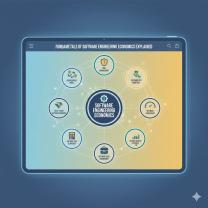How do you convert text to speech?
Converting text to speech (TTS) involves transforming written text into spoken words using various methods and tools. Here's how you can convert text to speech:
Text-to-Speech Software and Applications:
Use TTS Software: There are numerous TTS software applications available for Windows, macOS, and other platforms. Some popular TTS software includes Balabolka, Natural Reader, and TextAloud. Install the software, input the text you want to convert, select a voice, and click the "play" or "synthesize" button to hear the text spoken aloud.
Mobile TTS Apps: For smartphones and tablets, you can find TTS apps such as Google Text-to-Speech, Amazon Polly, and Voice Dream Reader. These apps allow you to input text and have it read aloud with various voice options.
Operating System Features:
Windows OS: Windows operating systems come with built-in TTS functionality called "Narrator." To use Narrator, go to "Settings" > "Ease of Access" > "Narrator" and enable it. You can then select text and press "Ctrl+Win+Enter" to have it read aloud.
macOS: On macOS, you can use the built-in "VoiceOver" feature for TTS. Enable it in "System Preferences" > "Accessibility" > "VoiceOver." You can then select text and press "Option+Esc" to hear it spoken.
iOS and Android: Mobile devices also have built-in TTS features. On iOS, enable "Speak Selection" in the Accessibility settings. On Android, the "TalkBack" feature provides TTS capabilities.
Online Text-to-Speech Converters:
- Web-Based Tools: Various online TTS converters allow you to paste or type text into a text box, select a voice, and generate spoken output. Examples include Google Text-to-Speech, iSpeech, and ResponsiveVoice.
Programming Languages and Libraries:
- Python: Developers can use Python libraries like gTTS (Google Text-to-Speech) and pyttsx3 to programmatically convert text to speech. These libraries provide APIs for TTS functionality.
Assistive Technology Devices:
- Assistive Devices: Some assistive technology devices, particularly those designed for visually impaired individuals, come equipped with built-in TTS features to read aloud text content.
Commercial TTS Engines:
- Commercial TTS Engines: Companies like Nuance Communications and CereProc offer advanced TTS engines and voices for commercial applications, including voice assistants and interactive applications.
Custom TTS Systems:
- Custom TTS Development: Advanced users and developers can create custom TTS systems using deep learning frameworks like TensorFlow and PyTorch. These frameworks allow for the development of specialized TTS models, including voice cloning.
Choose the method or tool that best suits your needs and platform. Many TTS solutions offer a variety of voices and customization options, allowing you to tailor the synthesized speech to your preferences. Whether you're looking for a simple text-to-speech tool for occasional use or a developer-friendly API for integrating TTS into your applications, there are options available to meet your requirements.
Text-to-Speech Technology and Synthetic Voices
Text-to-speech (TTS) technology is a process that converts text into spoken words. It is also known as speech synthesis. TTS systems use a variety of techniques to generate synthetic voices that sound as natural as possible.
One common technique is called concatenative synthesis. Concatenative synthesis systems break down text into individual phonemes and then concatenate these phonemes together to form words and sentences. The system uses a database of recorded phonemes to create the synthetic voice.
Another common technique is called parametric synthesis. Parametric synthesis systems use a model of the human vocal tract to generate synthetic speech. The system can control various parameters of the model, such as the pitch, volume, and intonation of the voice.
Applications and Usage of Text-to-Speech Software
TTS software is used in a variety of applications, including:
- Accessibility: TTS software can be used by people with visual impairments or other disabilities to access written content.
- Education: TTS software can be used to help students learn to read and write. It can also be used to create educational materials that are accessible to a wider range of students.
- Entertainment: TTS software is used to create audiobooks, podcasts, and other audio content. It is also used to create voiceovers for videos and animations.
- Customer service: TTS software is used to create chatbots and other customer service applications that can communicate with customers in a natural way.
TTS software is also used in a variety of other applications, such as navigation systems, home automation systems, and medical devices.
How Text is Converted to Natural Sounding Speech
Converting text to natural sounding speech is a complex task. TTS systems must take into account a variety of factors, such as the pronunciation of words, the intonation of the voice, and the rhythm of the speech.
One of the most important factors is the pronunciation of words. TTS systems must be able to pronounce words accurately, even if they are unfamiliar or unusual. This can be challenging, as there are many different ways to pronounce words in different languages and dialects.
Another important factor is the intonation of the voice. Intonation is the variation in pitch that is used to convey meaning and emotion in speech. TTS systems must be able to generate synthetic voices that have the appropriate intonation for the text being spoken.
Finally, TTS systems must also be able to generate synthetic voices that have the correct rhythm. Rhythm is the pattern of stressed and unstressed syllables in speech. TTS systems must be able to generate synthetic voices that have a natural rhythm.
TTS technology has come a long way in recent years. Synthetic voices now sound more natural than ever before. This is due to advances in AI and machine learning, which have allowed TTS systems to learn the patterns of human speech more effectively.
TTS technology is a powerful tool that can be used to improve communication and accessibility in a variety of settings. As TTS technology continues to improve, we can expect to see it used in even more applications in the future.












